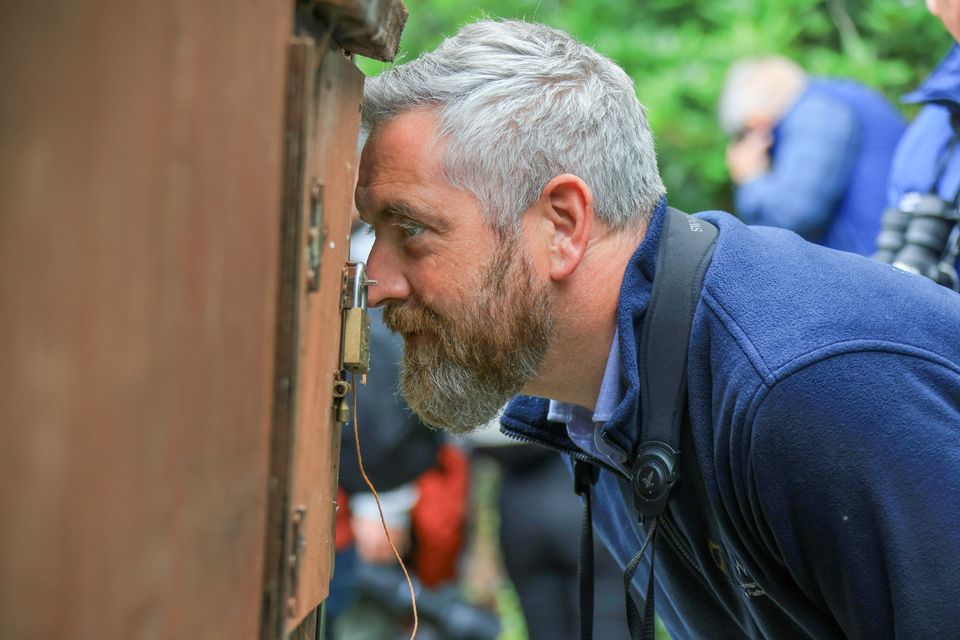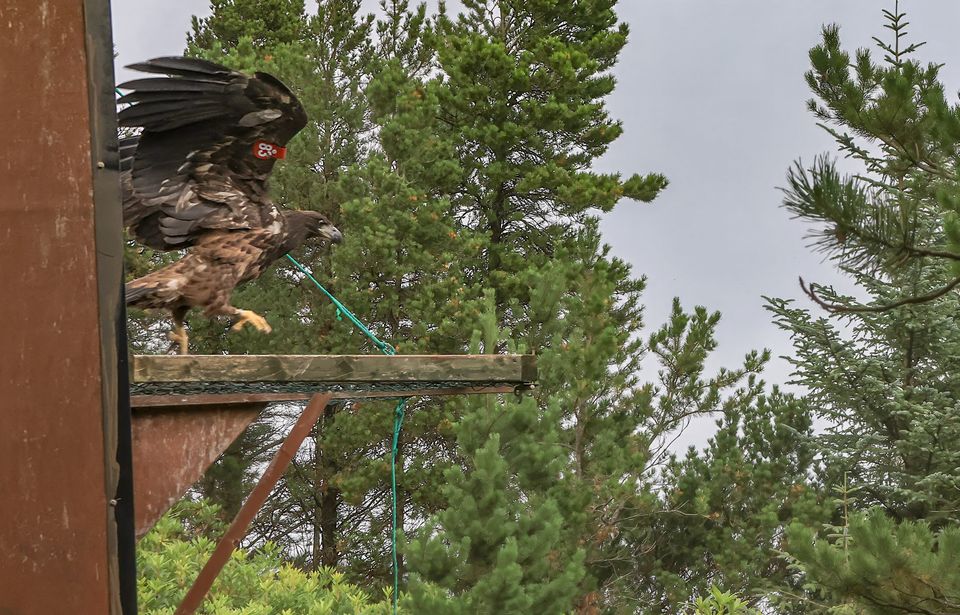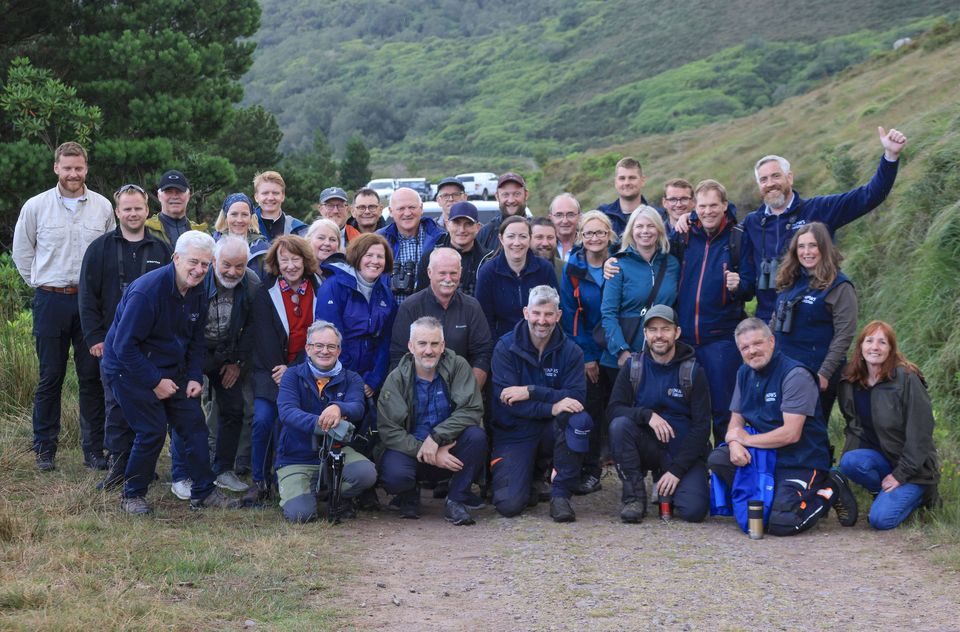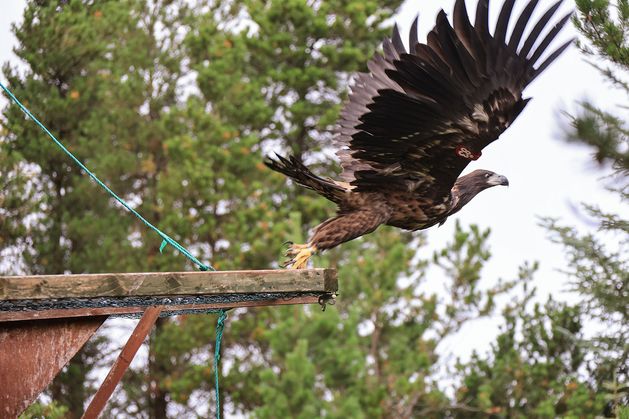Four of these were released in Killarney on Saturday as part of a number of releases around the country this month.
The chicks are the final cohort of this phase of the National Parks and Wildlife Service (NPWS) project which was originally established in 2007 and which, to date, has overseen the release of some 245 chicks into the wild. Once native to Ireland, the white-tailed eagle became extinct in the nineteenth century.
The NPWS has been working with partners in Norway along with farmers and communities around the country to reintroduce the white-tailed eagle and establish a population in Ireland.
Large numbers of breeding pairs now among established eagle population after absence of more than 100 years.

The Minister of State for Nature, Heritage and Biodiversity, Christopher O’Sullivan TD, today marked the successful end of the White-Tailed Eagle Reintroduction Programme with the release of four white-tailed eagle chicks back into the wild at Killarney National Park. Photo by Valerie O’Sullivan.
The Minister of State for Nature, Heritage and Biodiversity, Christopher O’Sullivan TD, visited Kerry at the weekend for the release of four more chicks.
“This programme has seen this mighty bird soar again in Irish skies and its success is a tribute to the NPWS and their colleagues in the Norwegian Institute for Nature Research. Over 18 years work and collaboration has led to a growing White-tailed Eagle population and also has seen habitat restoration and engagement with landowners and farmers to secure the eagles ongoing protection.
“It is one of a number of key NPWS initiatives underway to restore our biodiversity. This is the second phase of this reintroduction project, and we now have evidence of white-tailed eagles breeding in counties further afield – from the south of the island in Cork right up to Donegal,” he said.
“Killarney is a special place for the white-tailed eagle. This year, in Killarney National Park, two chicks have successfully fledged for the fourth year in a row. So, whilst we are sad to see the programme come to a close this year, it leaves a lasting legacy in the skies.”

The Minister of State for Nature, Heritage and Biodiversity, Christopher O’Sullivan TD, with Regional Manager National Parks and Wildlife Service, Eamonn Meskell, marked the successful end of the White-Tailed Eagle Reintroduction Programme with the release of four white-tailed eagle chicks back into the wild at Killarney National Park. Photo by Valerie O’Sullivan.

National Park and Wildlife Service with the Delegation from the Norwegian Institute, Norway’s Ambassador Aslak Brun, The Minister of State for Nature, Heritage and Biodiversity, Christopher O’Sullivan TD, Regional Manager National Parks and Wildlife Service, Eamonn Meskell, to mark the successful end of the White-Tailed Eagle Reintroduction Programme. Photo by Valerie O’Sullivan.
All of the chicks are fitted with satellite tags so that their movements can be tracked as they disperse and establish in new areas. The chicks are vulnerable to external factors such as adverse weather conditions, avian influenza, disease, and illegal poisonings.
In 2020, the National Parks and Wildlife Service began a second phase white-tailed eagle reintroduction project to bolster the existing eagle population in Ireland.
The original reintroduction programme (2007-2011) involved releasing 100 young white-tailed eagles in Killarney National Park.
By July 2020, a small breeding population of eight to ten pairs had successfully fledged 31 chicks across counties Cork, Kerry, Clare, Galway and Tipperary, including a pair who produced triplets.
It is estimated there are now approximately 150 individual eagles in the wild Ireland, enough to maintain and self-sustain the population. So far in 2025, the exact number of chicks born in the wild is unknown, but there are 17 known pairs in total.
Norway’s Ambassador to Ireland Aslak Brun said the eagles are now soaring over the skies in Ireland.
“We have the obligation to protect nature and halt the loss of biodiversity. It is my hope that the unique cooperation to reintroduce eagles will serve as an inspiration for other wildlife projects.”

